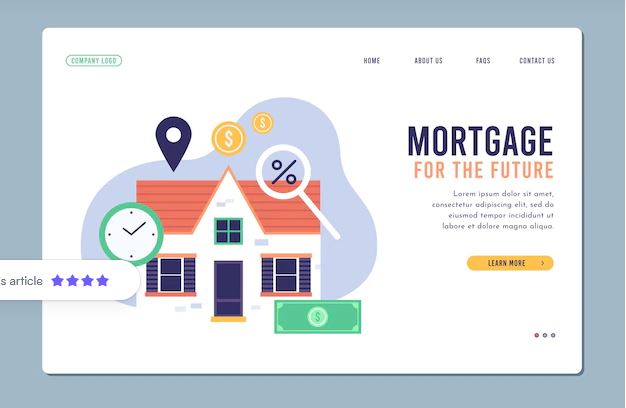Why Refinancing Your Mortgage Could Be the Smartest Financial Move You Make
As a homeowner, you may have heard about refinancing your mortgage but may not have a clear understanding of what it entails. In simple terms, mortgage refinancing is the process of replacing an existing mortgage with a new one that has better terms and conditions. The new mortgage pays off the previous one, and the homeowner starts making payments on the new mortgage.
Benefits of Refinancing Your Mortgage
There are several reasons why refinancing your mortgage can be a smart financial move. One of the main benefits is the opportunity to lower your monthly mortgage payment. If interest rates have decreased since you took out your original mortgage, refinancing at a lower rate can mean significant savings over the life of the loan.
Another benefit of refinancing is the ability to switch from an adjustable-rate mortgage (ARM) to a fixed-rate mortgage. With an ARM, your interest rate can fluctuate, resulting in unpredictable monthly payments. Switching to a fixed-rate mortgage provides stability and predictability in your monthly payments.
Refinancing can also allow you to tap into your home’s equity. If you have built up equity in your home, you may be able to refinance and take out some of that equity to pay for home improvements, debt consolidation, or other expenses.
When is the Right Time to Refinance Your Mortgage?
There are several factors to consider when deciding if refinancing your mortgage is right for you. The first is your current interest rate. If interest rates have dropped since you took out your original mortgage, it may be a good time to refinance.
Another factor is your credit score. A higher credit score can result in better interest rates and terms on your new mortgage. If your credit score has improved since you took out your original mortgage, refinancing may be a smart move.
Your home’s value is also an important consideration. If your home’s value has increased significantly since you took out your original mortgage, you may be able to refinance and take advantage of a lower loan-to-value ratio, which can result in better interest rates and terms.
How to Refinance Your Mortgage
The process of refinancing your mortgage is similar to applying for a new mortgage. You will need to gather your financial information, including income, assets, and debts, and submit an application to a lender.
Once you have submitted your application, the lender will review your financial information and determine whether you qualify for refinancing. If you do qualify, the lender will provide you with a loan estimate that outlines the terms and conditions of the new mortgage.
If you choose to move forward with the refinancing process, you will need to provide additional documentation, including income verification, bank statements, and proof of insurance. The lender will also order an appraisal of your home to determine its current value.
Types of Mortgage Refinancing
There are several types of mortgage refinancing, including rate-and-term refinancing and cash-out refinancing. Rate-and-term refinancing involves replacing your existing mortgage with a new one that has better terms and conditions, such as a lower interest rate or a shorter loan term.
Cash-out refinancing, on the other hand, involves taking out a new mortgage for more than you owe on your current mortgage and pocketing the difference in cash. This type of refinancing is typically used to access your home’s equity to pay for home improvements, debt consolidation, or other expenses.
Factors to Consider When Refinancing Your Mortgage
Before refinancing your mortgage, it’s important to consider the costs involved. Refinancing can come with several fees, including application fees, appraisal fees, and closing costs. These costs can add up quickly and may offset the savings you can achieve through refinancing.
It’s also important to consider the risks involved in refinancing. If you switch from an ARM to a fixed-rate mortgage, you may end up paying more in interest over the life of the loan. Additionally, if you take out a cash-out refinance and use the money to pay off credit card debt, you may end up with more debt in the long run if you continue to use your credit cards.
The Costs of Refinancing Your Mortgage
As mentioned earlier, refinancing your mortgage can come with several costs, including application fees, appraisal fees, and closing costs. These costs can add up quickly and can range from 2% to 5% of the total loan amount.
The good news is that some of these costs may be negotiable. For example, you may be able to negotiate with the lender to waive some of the fees or to reduce the interest rate in exchange for paying a higher upfront fee.
The Risks of Refinancing Your Mortgage
Refinancing your mortgage also comes with some risks. If you switch from an ARM to a fixed-rate mortgage, you may end up paying more in interest over the life of the loan if interest rates decrease. Additionally, if you take out a cash-out refinance and use the money to pay off credit card debt, you may end up with more debt in the long run if you continue to use your credit cards.
It’s important to carefully consider the risks and benefits of refinancing before making a decision. Working with a trusted financial advisor can help you make an informed decision that is right for your specific financial situation.
Mortgage Refinancing vs. Home Equity Loans
While refinancing your mortgage can allow you to tap into your home’s equity, another option is to take out a home equity loan. A home equity loan allows you to borrow money against your home’s equity and typically comes with a fixed interest rate and a fixed repayment schedule.
The main difference between refinancing your mortgage and taking out a home equity loan is that with a home equity loan, you are borrowing a separate loan on top of your existing mortgage. This means that you will have two separate monthly payments to make.
Conclusion and Final Thoughts on Refinancing Your Mortgage
Refinancing your mortgage can be a smart financial move that can provide significant savings over the life of the loan. However, it’s important to carefully consider the costs and risks involved before making a decision.
Working with a trusted financial advisor can help you make an informed decision that is right for your specific financial situation. By carefully weighing the benefits and risks and considering your current financial situation, you can make the most of this opportunity to improve your financial future.
Learn about How to Put Your Family Life Insurance Plan into Action.



